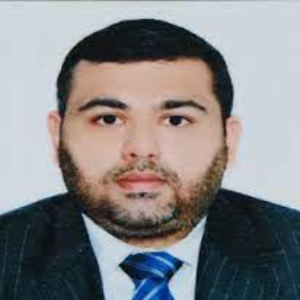Title : Role Of Multimodality Imaging In Diagnosis, Treatment And Prognosis/Risk Stratification In Patent Ductus Arteriosus Patients
Abstract:
Introduction: The ductus arteriosus is a vascular structure that connects the proximal descending aorta to the roof of the main pulmonary artery near the origin of the left branch pulmonary artery. This physiologically essential fetal structure normally closes spontaneously after birth. After the first few weeks of life, persistence of ductal patency is abnormal. And this abnormal presence of the ductus arteriosus is called PDA/patent ductus arteriosus. The physiological impact and clinical significance of the PDA depend largely on its size and the underlying cardiovascular status of the patient in recent years, cardiac imaging has advanced technologically, and patients with cardiovascular disease have become increasing more complex. This has led to the development of multimodal imaging, that is, the integration of several different imaging techniques with a single objective: to establish a precise diagnosis of the disease, in order guide treatment and predict prognosis throughout the patient's follow-up.
Objective: Our objective here is to establish and sum-up the importance and predict the potential of practical applications of multimodality imaging in PDA patients.
Methodology: Since there has been a lack of organized data on the application of multimodality imaging in congenital heart disease patients particularly patent ductus arteriosus/PUD. So in order to stratify the data we performed a fundamental/basic research, which aims to
- Seeks generalization.
- Aims at basic disease processes.
- Attempts to explain why things happen.
- Tries to get all the facts available till date, with sufficient data to support the objective.
- Reports in technical language of the topic.
Conclusions: The use of multimodality imaging has been proved to help specialists provide the patients with an early diagnosis and a much more detailed information on about how the disease might progress in the future, and of-course the risk involved with it, also on the other hand has provided researchers with much more detailed and relevant data on how the disease progresses pathologically providing a better insight for developing and designing or customizing the treatment modalities for such patients. There is lot to learn for us about the potential this technique holds and there is a long way to go, but the future looks promising.
What will audience learn from your presentation?
- The use of multimodality imaging has been proved to help specialists provide the patients with an early diagnosis and a much more detailed information on about how the disease might progress in the future.
- The study will help specialists calculate the risk involved with congenital heart defects, also on the other hand will provide researchers with much more detailed and relevant data on how the disease progresses pathologically providing a better insight for developing and designing or customizing the treatment modalities for such patients. There is lot to learn for us about the potential this technique holds and there is a long way to go, but the future looks promising.



